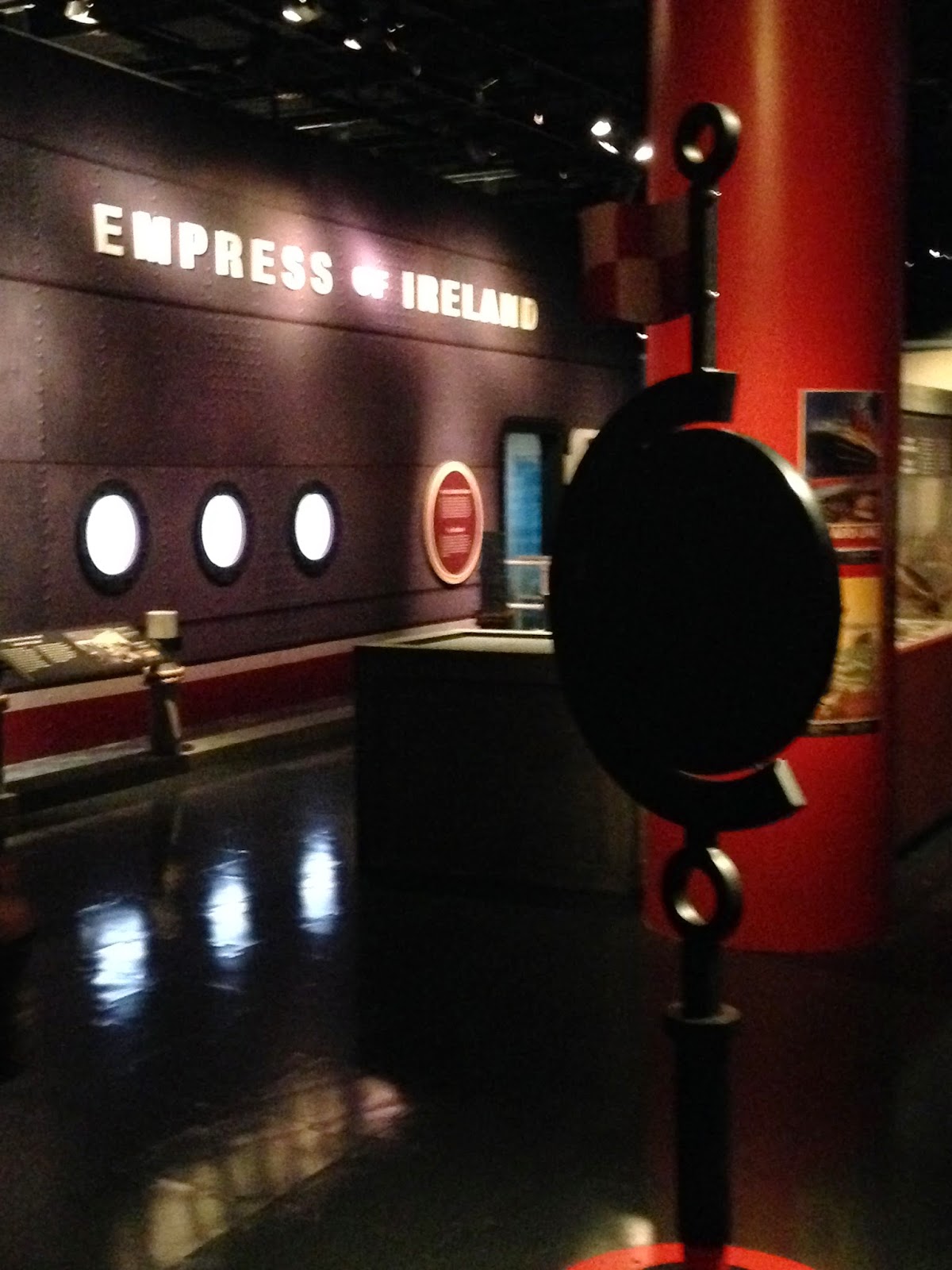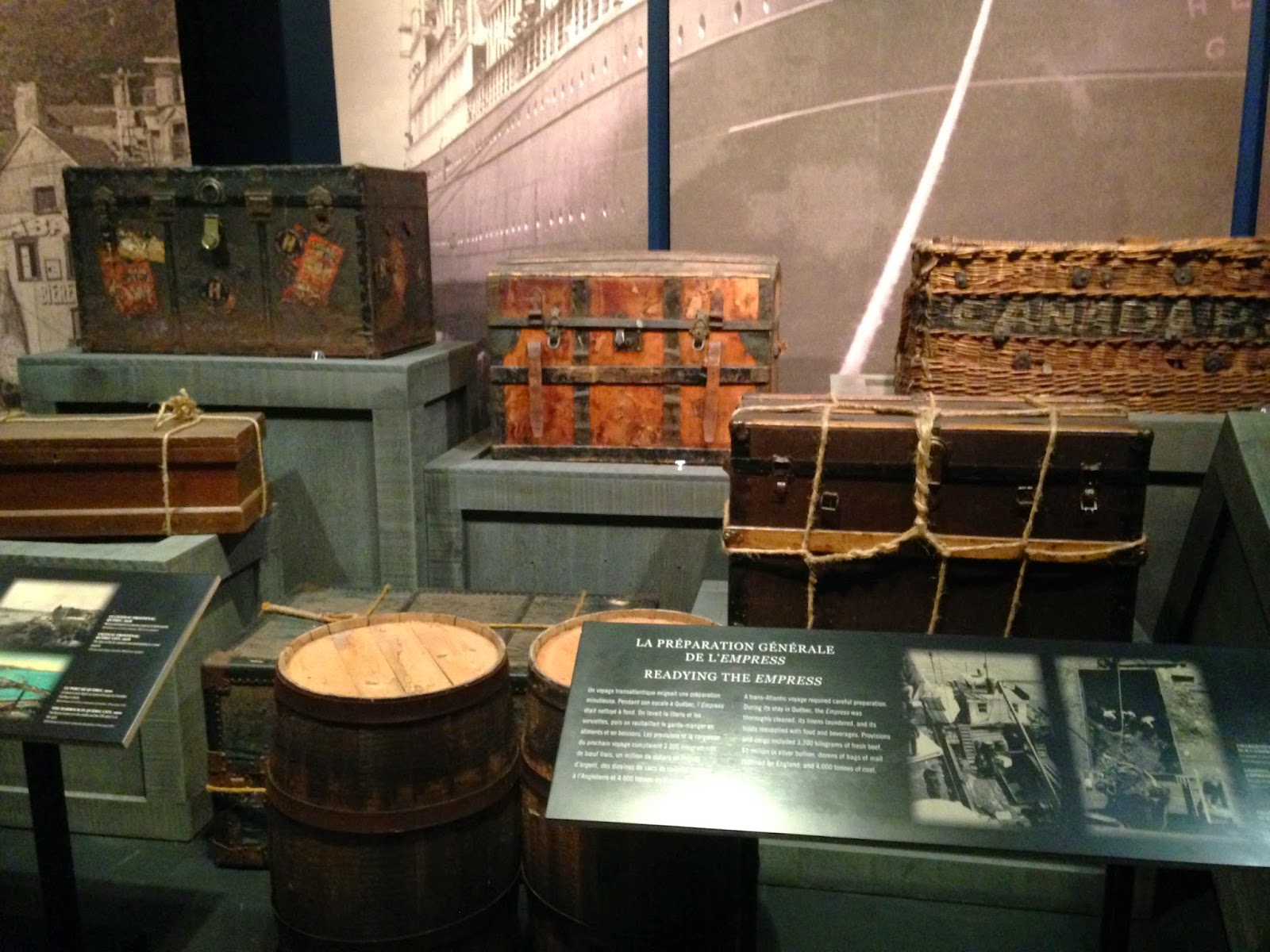World War Wednesdays: The Empress of Ireland
When people think of major disasters in the last century, Titanic is one that is at the forefront of their memories. Over a hundred years later, it is amazing to think that people still know or even care about such a faraway event. This is of course due in part to the cinematic adaptations which have done a good job of making the horror of that fateful night come to life. However, thanks to a recent visit to the Canadian Museum of History in Gatineau, Quebec, I learned about a similar tragedy which was much less publicized and much closer to home: The Empress of Ireland.
 |
| The Empress of Ireland |
Called Canada's Titanic, The Empress of Ireland is an equally chilling and arguably more terrible story which turns one hundred years old this year. In 1914, Canadian history was experiencing a pivotal period in which economic activity was booming, and hundreds of thousands of immigrants were arriving to be a part of this great new country. These people would travel by sea, on such a magnificent ship as The Empress of Britain or her sister, The Empress of Ireland.
The Empress of Ireland was owned by the Canadian Pacific Railway, and was used to make the transatlantic journey from Quebec City to Liverpool, England. The final fateful crossing, which began May 28th, 1914, was her 96th. 1,477 people boarded that day, among them 171 members of the Salvation Army who were en route to London for World Congress, 87 first class passengers, 253 second class passengers, 717 third class passengers, 420 crew members, and a total of 138 children.
In order to complete its journey, the ship needed to travel down the St. Lawrence River to get to the Atlantic Ocean. It was boasted that this short portion of a couple of days contributed to the Empresses' swift reputation. It was here that the tragic events unfolded.
 |
| The Empress of Ireland Glenbow |
 |
| The Empress of Ireland McCord |
 |
| The Empress of Ireland Music Room |
On the foggy night of May 29th, 1914, the lack of visibility and a confused encounter resulted in a Norwegian collier called the Storstad colliding with the Empress at a 45 degree angle near her center. The captain of the collier ordered 'full ahead' to remain inside the ship, but a strong current separated the two ships and allowed water to begin flooding into the gaping hole. At 1:55 AM, just fifteen minutes after the two vessels came close enough to see each other, the Empress began listing to the starboard side. Some of the port steel lifeboats broke loose and crushed passengers, but a few still managed to make it onto the water. Just ten minutes after impact, the ship completely turned over to starboard, the two huge smokestacks hit the water and crushed a lifeboat, and many passengers were hurled into the sea. After only fourteen minutes, the Empress of Ireland sank 6km off from Saint Luce-Sur-Mer, Quebec. By comparison, the RMS Titanic took two hours and forty minutes to sink.
The speed of the sinking, combined with its considerable death toll make this the greatest maritime disaster in Canadian history. Of the 1,477 souls on board, 1,012 were lost. Only 245 crew members survived from the original 420. Third class lost 584 of its 717, second class 205 of its 253, and first class 51 of its 87. The Salvation Army group lost 150 members. Of the 138 children on board, only five remained.
These heartbreaking numbers were not the last tragedies to befall the horrific event. One month later, the First World War broke out, and the sinking of the ship was quickly forgotten by the world along with its victims. It wasn't until fifty years later that a group of divers discovered the wreck. Despite dangerous conditions and numerous deaths, divers have been able to retrieve a number of items from the ship. These items have since been given to the Museum from a private collector.
 |
| The ship's bell |
 |
| The ship's telegraph |
From May 30th, 2014 to April 6, 2015, the items are on display at the Museum as part of their main exhibit. The exhibit itself is expertly done in a re-creation of the actual ship, taking you on the journey from the excitement of boarding to the terror of the collision. I had the opportunity to visit the exhibit, which I found to be highly emotional and an incredibly eerie experience.
 |
| The exhibit sign |
 |
| The exhibit entrance |
 |
| Inside the ship |
 |
| Baggage display |
 |
| Model and artifacts |
 |
| Quote from a passenger |
I also had the opportunity to attend a behind-the-scenes event where I met with the curator and conservationist who set up the exhibit. They shared with us a fascinating description of how the items were displayed, and their journey from salty ocean floor to pristine museum condition. It was fascinating to see the items up close and to learn more about them. This story is an incredibly interesting one, which I had never heard before, and I'm so thrilled to have been able to learn about it in such an interactive way.
Thanks for reading,
Delany Leitch
  |
| The Museum grounds, overlooking the Ottawa River and Parliament Hill |
Here's where I found some supplementary information:
http://www.historymuseum.ca/empress
http://news.nationalpost.com/2014/05/28/canadas-titanic-the-sinking-of-the-empress-of-ireland/
On the Museum's website you can see a survivor's emotional account of her experience that night. I've also included some of the personal stories which are on display at the Museum.






No comments:
Post a Comment